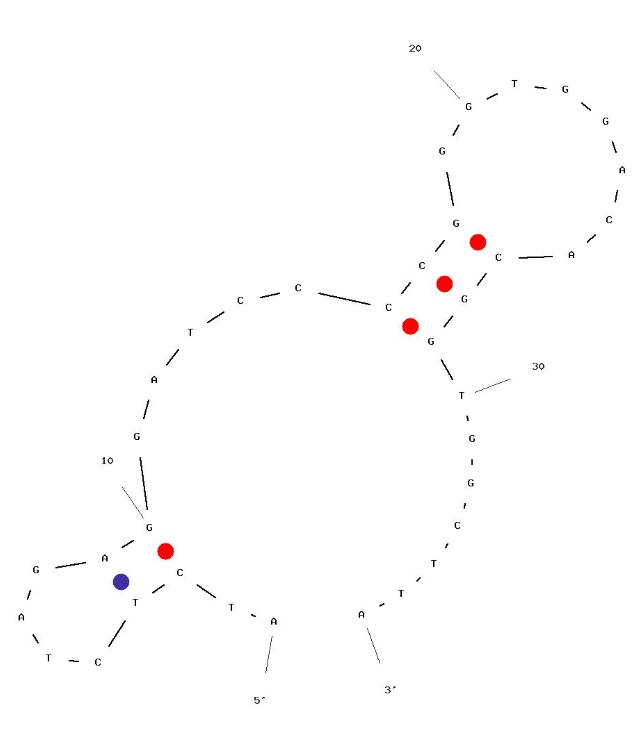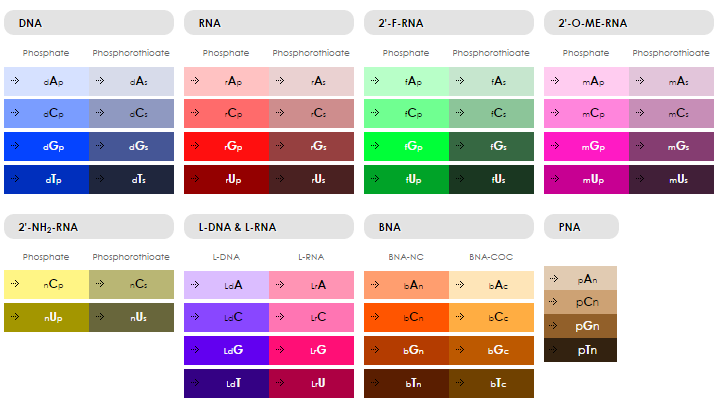Aptagen, LLC

4VA-Apt21 CUT (ID# 9218)

DNA
4-Vinylanisole (4VA)
Small Organic
269.25 ± 90.65 nM (reported value)
Not explicitly provided in the study
25°C
Likely follows standard DNA aptamer refolding: heating, cooling, and buffer incubation
Stronger binding to 4VA compared to ap-3, ap-5, and ap-9. No reported binding to structurally unrelated compounds
Identified through BLI-SELEX screening
Optimized into a truncated form (ap-21-CUT) for improved affinity (Kd: 269.25 ± 90.65 nM)
Exhibits higher stability and affinity, making it the best candidate for sensor development
5'-dApdTpdCpdTpdCpdTpdApdGpdApdGpdGpdApdTpdCpdCpdCpdCpdGpdGpdGpdTpdGpdGpdApdCpdApdCpdGpdGpdTpdGpdGpdCpdTpdTpdAp-3'


36
~11,880 Da
Note: Information on this aptamer oligo was obtained from the literature and hasn't been validated by Aptagen.
Hu, M., Wang, J., Liu, H., Chen, Q., Xie, C., Li, Q., Sun, J., Liao, D., Liu, Y., & Liu, H.-B. (2023). Development of functional nucleic acid sensor for detection of locust pheromone 4-vinylanisole. Chemical Engineering Journal, 466, 143065
Have your aptamer oligo synthesized ORDER



We are always looking for ways to improve. Please tell us what you think.